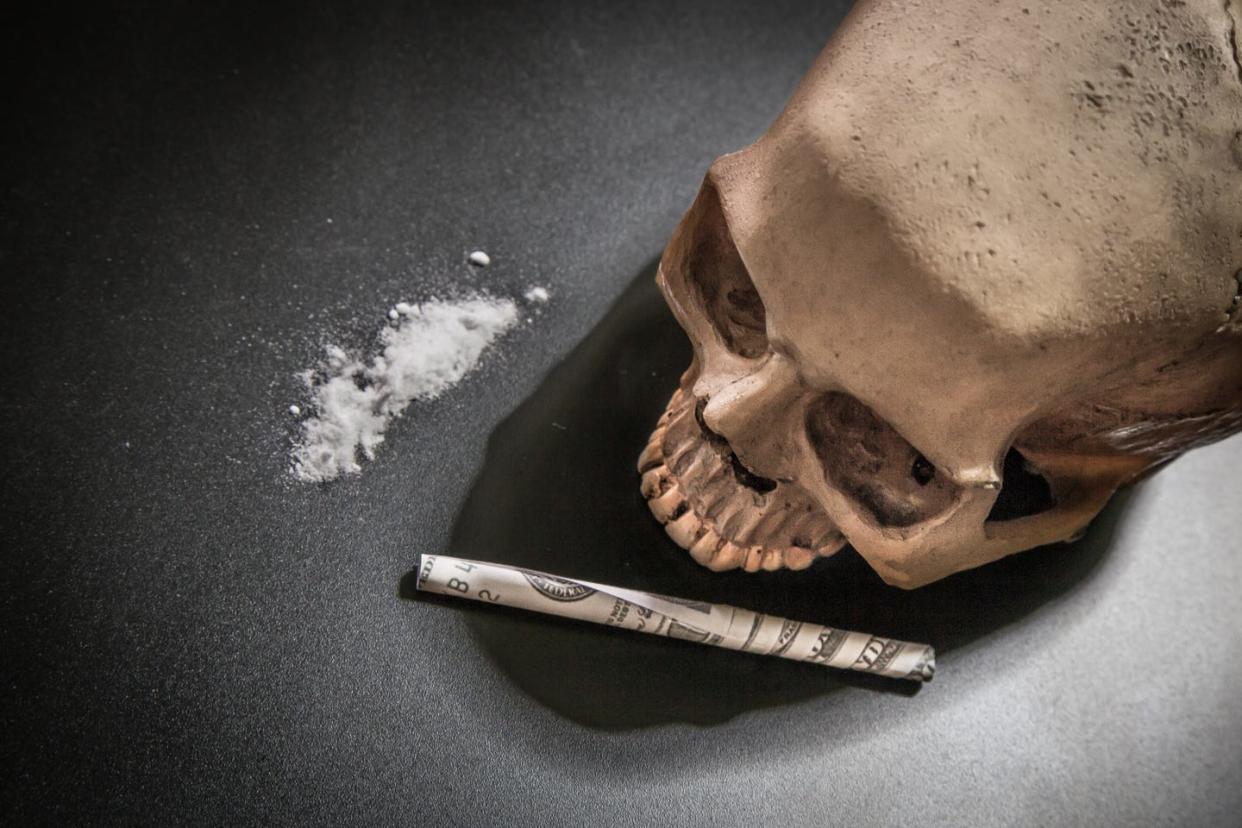Scientists Uncovered a Blow From the Past: 17th Century Brains Contained Cocaine

Although cocaine use became widespread in the 19th century once it was synthesized into cocaine hydrochloride salts, Europeans knew of the coca plant’s stimulating effects since the early 15th century.
A new study of 17th-century remains from a crypt in Milan shows traces of an active component of the coca plant in the subjects’ brain tissue.
This suggests Europeans used coca leaves earlier than previously thought and is the earliest evidence of such drug use on the European continent.
Of the approximately 200 members in the genus Erythroxylum, most species contain the central nervous system stimulant tropane alkaloid, known more commonly as cocaine. Because the plant is endemic to South America, indigenous groups throughout the continent chewed the leaves of these plants to reach the high that eventually sparked a lucrative, deadly drug trade in the here and now.
Some of the earliest evidence of the drugs can be found in tissue samples of Chilean mummies, dated to around 1,000 BCE, though the practice is likely even older than that.
However, there’s much less evidence pointing to when this natural narcotic made its way to Europe. Spanish conquistadors first encountered the plant in the late 15th century, and their writings at the time describe natives “carry[ing] these leaves in their mouths without eating them, but simply between their teeth” and “that it kept them from feeling hungry, giving them great vigor and strength.”
Although they tried to ban the practice in the Americas, the plant made its way to Europe around the late 16th century, and now a new study shows that the continent wasted little time partaking in the natural stimulant of the “New World.”
According to a new study published in the Journal of Archaeological Science, an analysis of brain tissue from human remains located at the Ca’ Granda crypt in Milan, Italy, shows evidence of active components of the coca plant. The crypt was used as a burial place for the Ospedale Maggiore—a world-class hospital in the 17th century—and the study’s lead author, University of Milan’s Gaia Giordano, previously found evidence of opium use among the cadavers of this crypt. But this new study extends that the era’s drug list by also including cocaine.
“Toxicological analyses were performed on preserved human brains revealing the first evidence of Erythroxylum spp. use in Europe before the 19th century,” the paper reads, “backdating our understanding of the presence of the plant by almost two centuries. Given that the plant was not listed inside the detailed hospital pharmacopeia, it may not have been given as a medicinal remedy but may have been used for other purposes.”
Most historians believe cocaine use didn’t proliferate throughout Europe until the 19th century when the drug was synthesized as cocaine hydrochloride salts. However, Spaniards certainly knew of the plant’s effects centuries earlier, and some conquistadors, including a Spanish doctor named Nicholas Monardes, were known to grow plants from the Americas in Spain.
By the 17th century, when those buried in the crypt would have lived, Milan (then a possession of Spain) was a major importer of exotic plants, especially from the Americas, so cocaine could’ve taken hold there earlier than the rest of Europe. Also these people likely weren’t well-off, meaning that coca leaves might’ve been more easily available even during its early introduction to the continent.
To the authors’ knowledge, this is the earliest evidence of a “detection of compounds derived from the Erythroxylum spp” in continental Europe. However, it’s not the first detection in the Old World. In 1992 a study purported the existence of cocaine in Egyptian mummies, a surprising anachronism since no evidence suggests contact existed between this ancient Nile civilization and the Americas. Although those results remain disputed, Giordano’s surprising discovery doesn’t require such a fantastical leap, and suggests that cocaine use—at least in the form of coca leaves—may have taken hold in Europe sooner than previously believed.
Of course, this perplexing answer leads to the next logical question: Just how far did coca’s influence reach in 17th century Europe?
You Might Also Like
